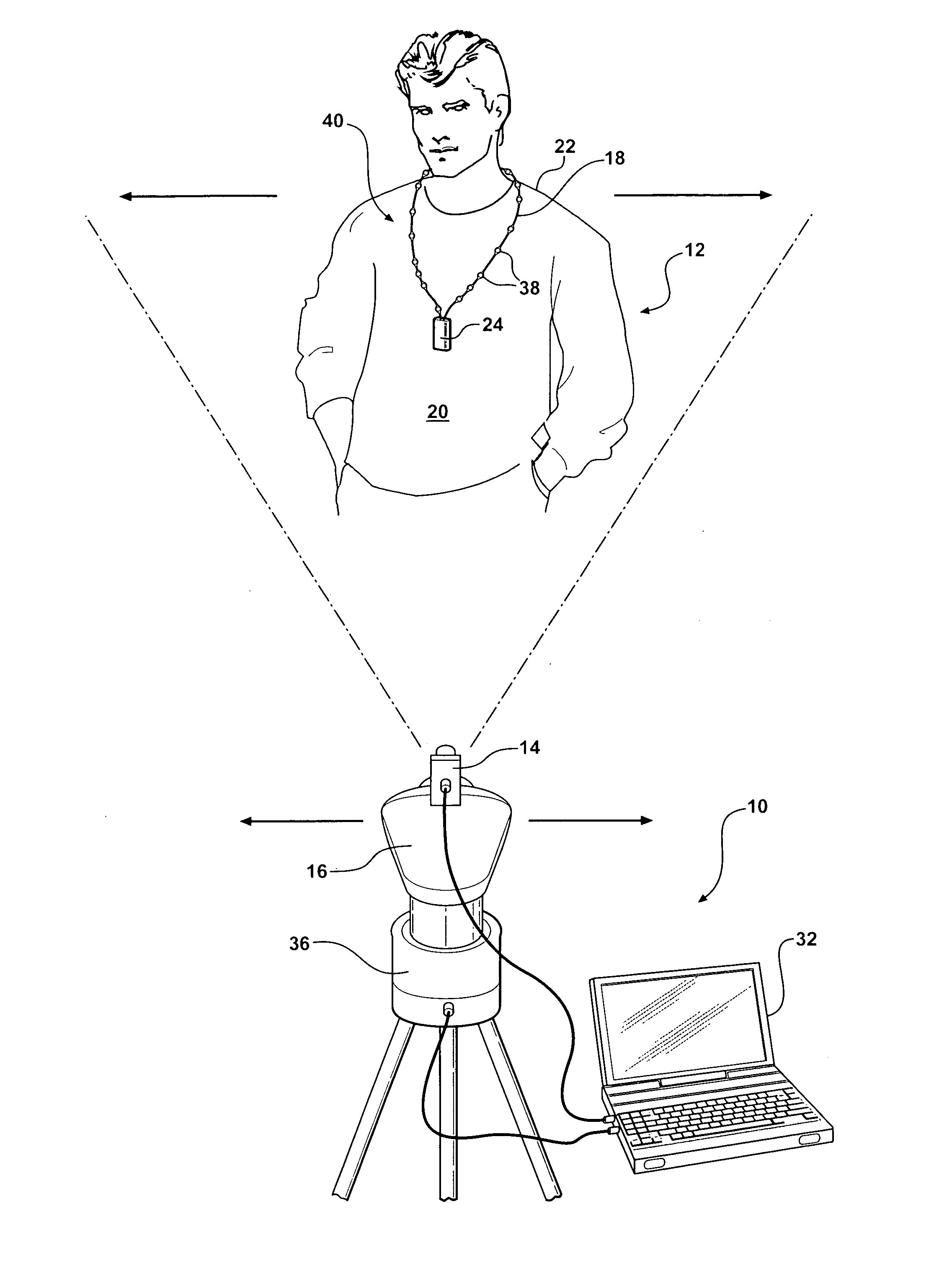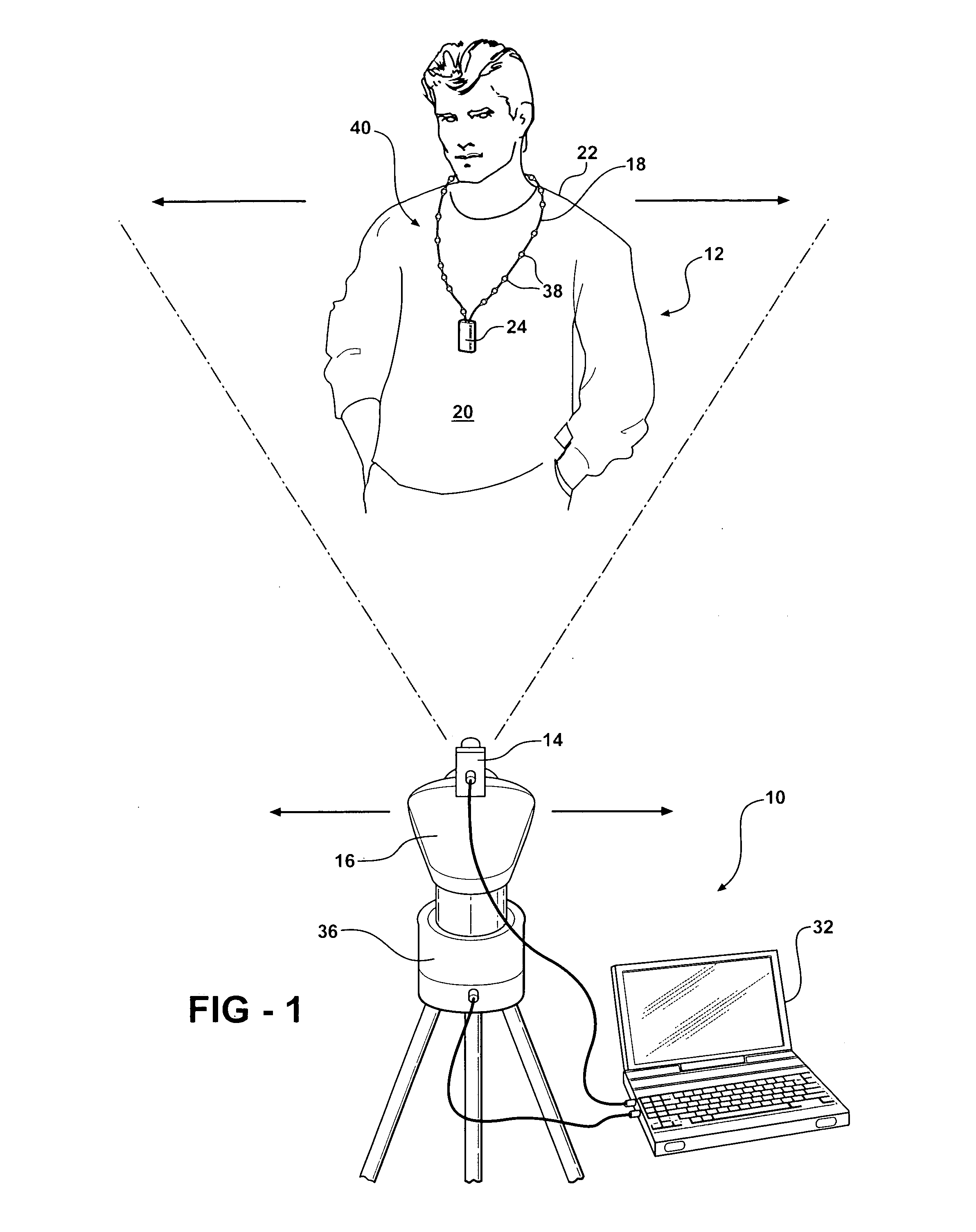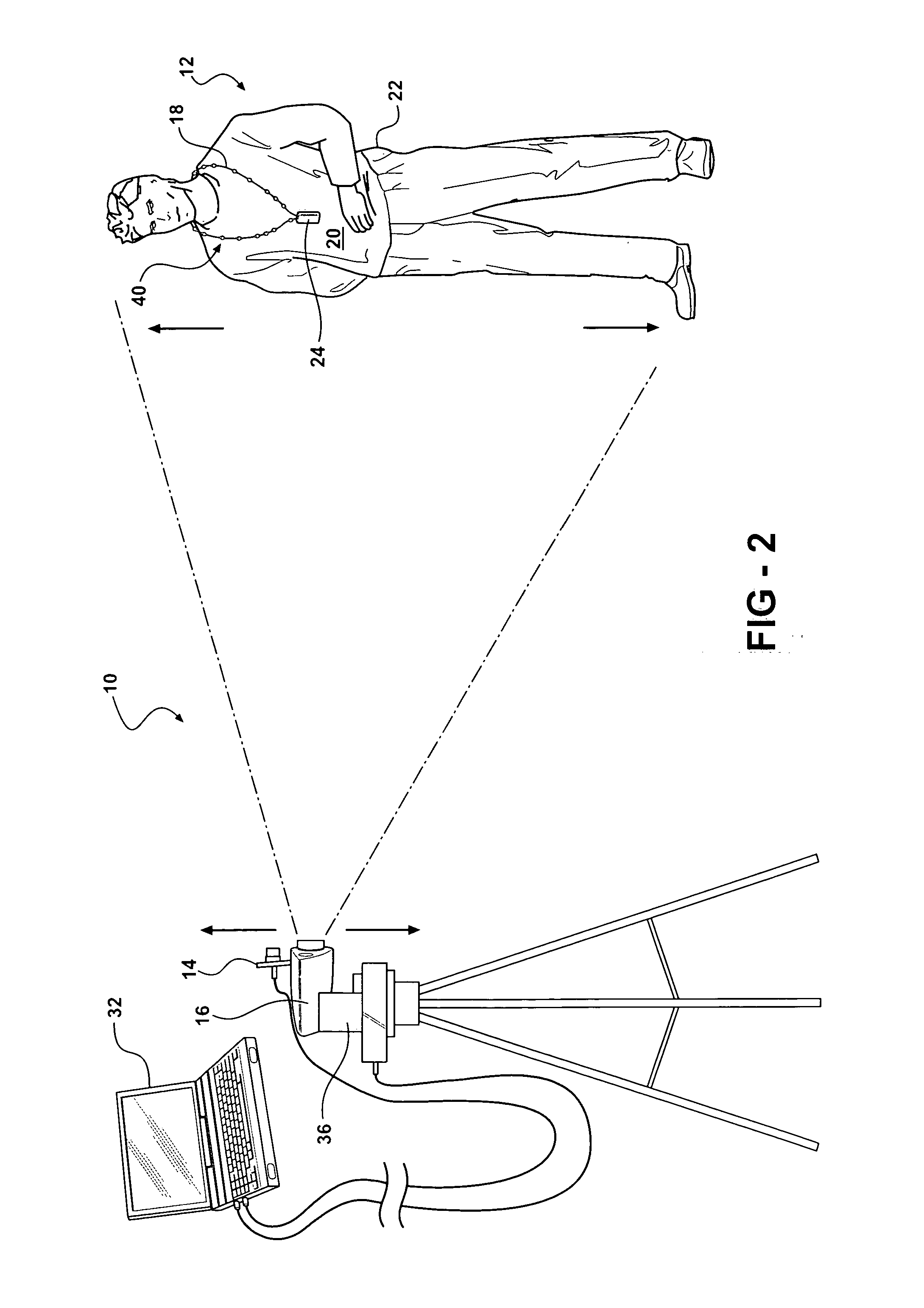Position tracking system
a tracking system and position technology, applied in the direction of direction finders, television systems, instruments, etc., can solve the problems of tracking system losing track of objects, inaccuracy of tilt and pan signals generated by processors, and skewing of camera signals, so as to achieve the effect of quick installation
- Summary
- Abstract
- Description
- Claims
- Application Information
AI Technical Summary
Benefits of technology
Problems solved by technology
Method used
Image
Examples
Embodiment Construction
[0024] Referring to the Figures, wherein like numerals indicate corresponding parts throughout the several views, a position tracking system is shown generally at 10 in FIGS. 1 and 2. One of the contemplated uses for the position tracking system 10 is for tracking the movement of a lecturer 12 during a lecture or a seminar to enable a visible-light video camera 14 to track and record the lecturer 12 as the lecturer 12 moves around. The lecture or seminar may be recorded and stored for future use, used to network in remote attendees, and / or disseminated over the internet. The position tracking system 10 eliminates a need for a human camera operator, which adds expense to recording the lectures or seminars on video. It is contemplated that by using the position tracking system 10 of the present invention, a large volume of lectures may be recorded and archived without the expenses that typically accompany recording lectures. Although the position tracking system 10 of the present inve...
PUM
 Login to View More
Login to View More Abstract
Description
Claims
Application Information
 Login to View More
Login to View More - R&D
- Intellectual Property
- Life Sciences
- Materials
- Tech Scout
- Unparalleled Data Quality
- Higher Quality Content
- 60% Fewer Hallucinations
Browse by: Latest US Patents, China's latest patents, Technical Efficacy Thesaurus, Application Domain, Technology Topic, Popular Technical Reports.
© 2025 PatSnap. All rights reserved.Legal|Privacy policy|Modern Slavery Act Transparency Statement|Sitemap|About US| Contact US: help@patsnap.com



